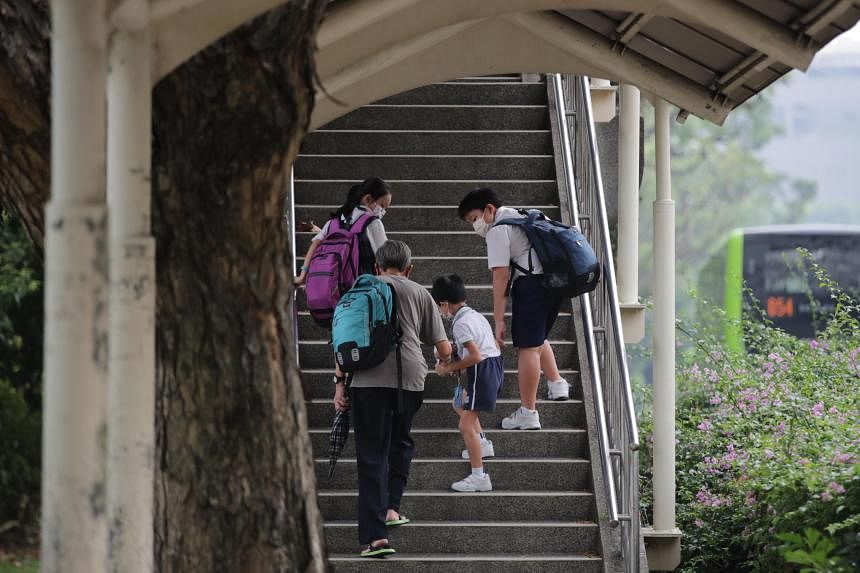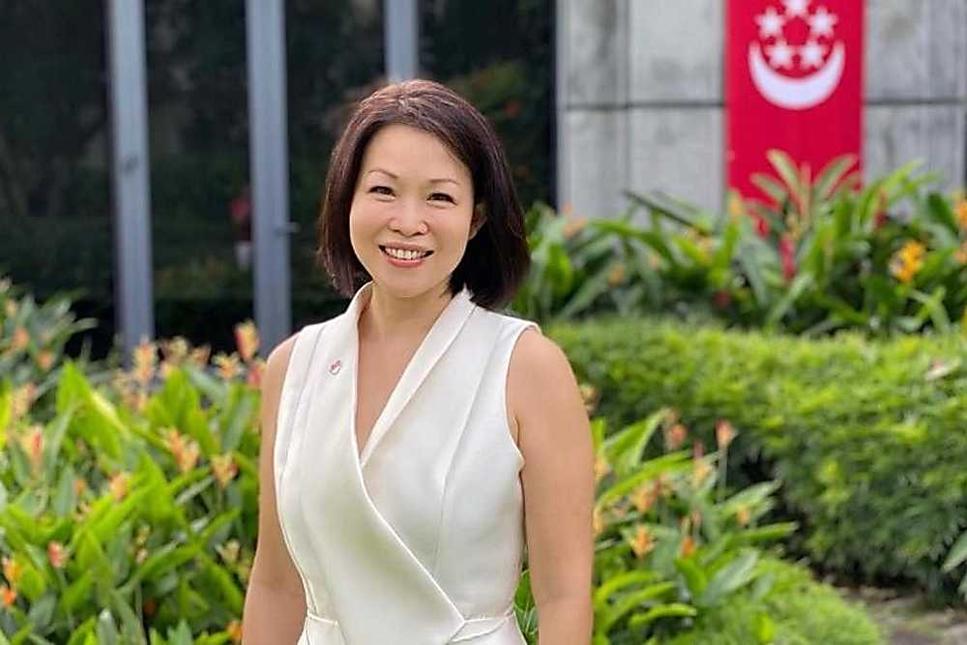Grandparents could solve Singapore’s child-bearing woes, but are they willing?
If more are willing to care for their grandchildren, it may encourage Singaporeans to have more babies. Why isn’t this happening?

Earlier in July, the Immigration and Checkpoints Authority released statistics showing a record low birth rate in Singapore. There were 35,605 live births in 2022, a 7.9 per cent drop from 38,672 in 2021.
At the same time, the number of deaths annually since 1960 was at its highest, with 26,891 deaths compared with 24,292 recorded in 2021 (10.7 per cent increase).
Singapore’s population woes are well known. At a total fertility rate (TFR) of 1.05 children per woman in 2022, Singapore’s TFR is half the replacement rate of 2.1 and ranks near the bottom in the world. It is not too far above South Korea’s (0.78), which is the lowest in the world.
To address the problem, the Singapore Government announced a slew of measures aimed at supporting marriage and parenthood in February. These include increasing the Baby Bonus Cash Gift, doubling the length of government-paid paternity leave, and encouraging the adoption of flexible work arrangements.
Singapore’s low TFR is a thorny issue that raises questions about the long-term sustainability of the nation’s growth, ranging from impacts on economic growth to national security.
This is the result of numerous complex factors and private decisions by people on matters such as marriage, reproduction and career, which collectively impact the common good over time. There is also an X factor – grandparents.
How grandparents can help
Fertility decisions, while personal, are often made with certain expectations in mind. These include the roles of not only both spouses, but also the extended family, especially the grandparents of the child.
Motivated by natural bonds of love, kinship and affection, grandparental caregiving is a largely hidden source of support for dual-income households. Parents may often trust their kin more than strangers to care for young children.
When grandparents are willing to care for children, it can boost fertility rates.
A 2020 study comparing data across 11 European countries found that when would-be grandparents had the propensity to care for their grandchildren, this tended to encourage their adult children to transition into parenthood. This was the case in Austria, Belgium, France, Germany, Greece, Italy, Spain and Switzerland.
Likewise, a 2017 study examining women’s fertility intentions and behaviour in South Korea found that among the factors that increased the possibility of women having a second child was intensive childcare assistance from parents or in-laws who were living with them.
One developed country that has bucked the trend of low fertility rates is Israel, which had a TFR of more than 2.9 in 2022.
No doubt religiosity is part of the explanation, especially among the ultra-Orthodox Jewish community, where there was an average of 6.5 live births per woman from 2019 to 2021.
However, the fertility rate is also relatively high among the secular population, at around two children per woman.
A 2016 study on the “unexpectedly high” fertility rates among secular, native-born Jews in Israel found that 82.5 per cent of such mothers aged 25 to 39 received assistance from the child’s grandparents. This was higher than the national average of 71 per cent.
The author noted in her study that adult children tend to live near their parents in Israel and have close intergenerational ties. She suggests that these factors help to prop up the ideals of having at least three children.
But... are Singaporean grandparents willing?
By contrast, grandparental caregiving in Singapore is less widespread than in Israel. Data from the Health Promotion Board from 2012 shows that 35 per cent of seniors over the age of 55 look after their grandchildren on a regular basis, and one in four households with children under the age of 12 relies on grandparents as the main caregiver.
There could be many reasons why some grandparents are reluctant to help with caregiving. These could range from the seniors’ personal desires to seek other pursuits in life such as travel, socialising with their own friends, doing more volunteer work or pursuing other opportunities that work and family commitments might have affected earlier.
Some seniors may not be in a position to help due to advanced age or poor health.
Disagreements between the adult children, their siblings and their parents may also be a factor.
Furthermore, statistics show that more seniors are preferring to return to the workforce, albeit on a more flexible schedule. Due in part to government efforts to raise employability of older workers, the employment rate of those aged 65 and above has been steadily rising, from 27.6 per cent in 2019 to 31 per cent in 2022, a third of whom were working part-time.
Even when grandparents assist with caregiving, they tend to follow the gendered roles of the earlier generation where women traditionally undertook caregiving roles. As a 2019 research study of 439 mothers and their children by the Singapore Children’s Society found, grandmothers were typically the main caregivers when the children were 18 months old. At four months of age, the children usually had their mothers as the main caregivers, followed by grandmothers.
Strengthening the caregiving ecosystem
The TFR problem is already a demographic crisis. Singapore has an ageing population with nearly one in five (18.4 per cent) Singapore citizens over the age of 65, and the figure is projected to rise to almost one in four by 2030.
Faced with other problems such as the rising cost of living, the burdens on working adults are likely to only increase.
Grandparental caregiving may encourage more people here to become parents, while also giving the elderly a chance to bond with their grandchildren.
Existing government schemes to promote multi-generational living include the Married Child Priority Scheme, Multi-Generation Priority Scheme and Proximity Housing Grant to enable purchasers of Housing Board flats to live with or near their parents. Working mothers whose parents, grandparents or in-laws help take care of their children are entitled to Grandparent Caregiver Relief from their taxes.
But the fact that many grandparents are unwilling to assume caregiving responsibilities suggests that more should be done to make it worth their while.
First, HDB can build more three-generation (3Gen) flats to enable multi-generation families to live under one roof. Introduced in 2013, 3Gen flats still remain a minority among flats. From 2015 to 2019, only 530 out of 76,261 new flats were 3Gen ones in non-mature estates. For mature estates, the figure was 112 out of 17,293.
Second, additional ballots can be given to Build-To-Order applicants who apply for flats near their parents. A similar suggestion was made by Member of Parliament Lim Biow Chuan in July 2022.
Third, in the light of rising employment among seniors, it may help to extend childcare leave to working grandparents as well, to enable and encourage the involvement of senior men and women in their grandchildren’s lives. At present, eligible working parents of Singapore citizens are entitled to six days of paid childcare leave per year.
Finally, all segments of society can help to promote the value of grandparents and healthy, active and meaningful ageing. Old age should not be seen as burdensome, but as a time of new opportunities to strengthen and rebuild family ties.
Conclusion
The above suggestions are not a cure-all, but they can help Singapore’s fertility woes. As the Japanese “miracle town” of Nagi demonstrates, the TFR issue requires nothing short of a collective effort to combat it.
As a small town with a population of around 5,800, Nagi reversed its low birth rate from around 1.4 in 2005 to nearly 2.7 in 2021, in a country where the TFR is around 1.2. Its success was born out of two decades of effort following an existential threat posed by low fertility, where it was nearly merged with nearby cities due to its declining population.
Singapore, too, will need a collective effort to improve its fertility rate. Grandparents can play a big part in this – if they are willing to.
- Darius Lee is executive director of Cultivate SG, an organisation dedicated to “growing the good, one conversation at a time”.
Join ST's Telegram channel and get the latest breaking news delivered to you.









No comments:
Post a Comment